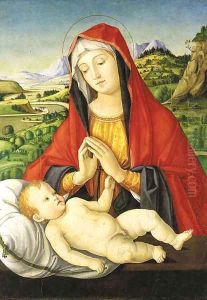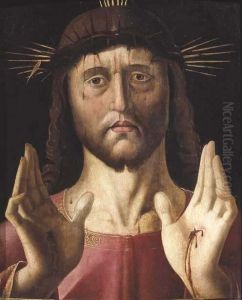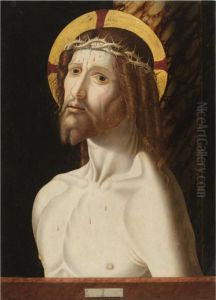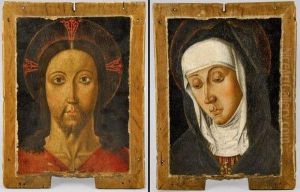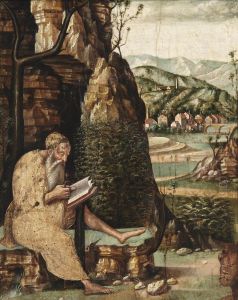Jacopo Da Valenza Paintings
Jacopo da Valenza is an Italian painter whose life details are not thoroughly documented. His work primarily falls into the period of the late 15th and early 16th centuries. There is little known about his early life, including his exact birth year, though it is presumed he was active during the end of the 1400s and into the early 1500s. The 'da Valenza' in his name suggests that he was either born in or was active in Valenza, a town in the region of Veneto, Italy.
Jacopo's artistic style indicates that he was part of the Venetian school, which was known for its use of vivid color and emphasis on atmospheric effects. He is sometimes associated with the Renaissance movement, though his work also retains elements of the Gothic tradition, which is characterized by elongated figures and a certain gracefulness of line. His works include religious subjects which were common during that era, such as altarpieces and devotional panels.
One of the reasons Jacopo da Valenza is not as well-known as his contemporaries is the scarcity of surviving works that can be definitively attributed to him. However, those that are attributed to him show a high level of skill and craftsmanship. Several of his works have been analyzed to assist in identifying his unique style and brushwork. These characteristics have allowed art historians to tentatively attribute other works to him.
He is known to have painted an altarpiece for the church of San Francesco in Valenza, and this work has been used as a basis for comparison with other paintings from the region and era. The exact date of Jacopo da Valenza's death is also unknown, but certain works of art are attributed to him that date up until about 1515, which suggests he was active at least until that year. His legacy is that of a regional master who contributed to the richness of the Venetian Renaissance, yet remains somewhat obscure outside of specialist circles.
